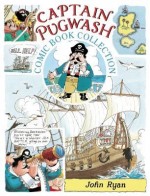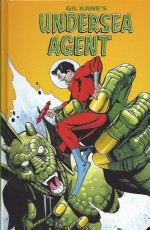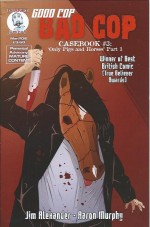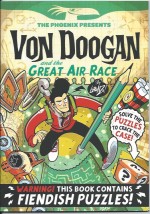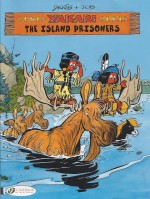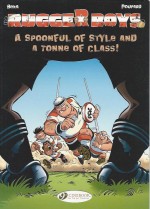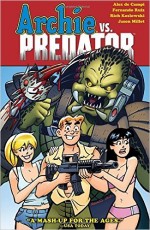
By Alex de Campi, Fernando Ruiz, Rich Koslowski, Jason Millet & various (Dark Horse Books)
ISBN: 978-1-61655-805-5
For nearly three-quarters of a century Archie Andrews has epitomised good, safe, wholesome fun, but inside the staid and stable company which shepherds his adventures there has always hidden an ingenious and deviously subversive element of mischief.
Family-friendly iterations of superheroes, spooky chills, sci-fi thrills and genre yarns have always been as much a part of the publisher’s varied portfolio as the romantic comedy capers of America’s cleanest-cut teens since they launched as MLJ publications in the Golden Age’s dawning.
As you probably know by now, Archie has been around since 1941, spending most of those seven-plus decades chasing both the gloriously attainable Betty Cooper and wildly out-of-his-league debutante Veronica Lodge whilst best friend Jughead Jones alternately mocked and abetted his romantic endeavours and rival Reggie Mantle sought to scuttle his every move…
As crafted over the decades by a legion of writers and artists who’ve skilfully logged innumerable stories of teenage antics in and around the idyllic, utopian small-town Riverdale, these timeless tales of decent, upstanding, fun-loving kids have captivated successive generations of readers and entertained millions worldwide.
To keep all that accumulated attention riveted, the company has always looked to modern trends with which to expand upon their archetypal brief. In times past they have strengthened and cross-fertilised their stable of stars through a variety of team-ups such as Archie Meets the Punisher, Archie Meets Glee, Archie Meets Vampirella and Archie Meets Kiss, whilst every type of fashion-fad and youth-culture sensation have invariably been accommodated into and explored within the pages of the regular titles.
That willingness to dip traditional toes in unlikely waters led in 2015 to the publishers taking a bold and potentially controversial step which paid huge dividends and created another monster sales sensation…
The genesis of this most unlikely cross-fertilisation of franchises is explained in great detail and with a tremendous sense of “how did we get away with it?†in Roberto Aguirre Sacasa’s ‘Introduction’, but just in case you’re new to the other participant in all this…
Predators are an ancient alien species of trophy-taking sporting types who have visited the hotter parts of Earth for centuries, if not millennia. They are lone hunters who can turn invisible and resort to a terrifying selection of nasty weapons. They particularly like collecting skulls and spinal columns…
Predator was first seen in the eponymous movie from 1987 and started appearing in comic book extensions and continuations published by Dark Horse with the 4-issue miniseries Predator: Concrete Jungle (June 1989 to March 1990). It was followed by 22 further self-contained outings and numerous crossover clashes ranging from Batman and Superman to Judge Dredd and Tarzan, steadily keeping the franchise alive and kicking whilst the movie iteration waxed and waned…
This spectacularly eccentric yarn pulls off the peculiar and miraculous trick of creating a hilarious and scary family-friendly teen-slasher flick which begins ‘When You Wish Upon a Star’ as all the young cast regulars head to Costa Rica for Spring Break and are having the time of their lives, until Betty and Veronica have a particularly vicious spat over Archie which leads to a spooky confrontation and a curse uttered over what might be an actual voodoo dagger.
Science-whiz Dilton is occupied with his telescope watching and everybody is blissfully unaware that they’ve piqued the attention of something patient, invisible and completely alien…
When they all head home they have no conception that some of their number are already trophies on a wall…
With the youngsters back in Riverdale Archie and his companions settle back into their routine but soon realise that something has followed them when a beloved adult is decapitated in plain sight. Soon the community is cut off and they are all waiting ‘To Live and Die in a Small Town’…
Convinced their meddling with the occult has brought on the killing-spree, Betty and Veronica testily consult sorcerous expert Sabrina (the Teenage Witch) but that ends in another welter of scarlet and screaming and the first sighting of the thing from the stars…
Thing get grim and crazy as the rapidly depleting posse of teens meet the Government agents tasked with covertly countering the Predators but continue to fall until Dilton rolls out the weird science and Archie dons a ‘Full Metal Varsity Jacket’…
Soon the beloved cast is down to the barest essentials and the last few resistors face their final curtain in ‘Guess Who’s Coming to Dinner’…
After a surprisingly gripping and gory conclusion that will astonish and delight everyone an ‘Afterword’ by series Editor Brendan Wright gives more insight into the impetus and creative process behind this inspired tale, but there are still plenty of treats in store.
Scripter Alexi de Campi also got to play with others creators’ toys in a series of Bonus Crossovers, which rounded out the comics issues. Here follow quirky, perky little one and two page vignettes such as the eerily satisfying ‘Sabrina Meets Hellboy’ with art and colours by Robert Hack, lettered by Clem Robins, and the fabulously bizarre ‘Li’l Archie and his Pals meet Itty Bitty Mask’ by Art Baltazar.
Philosophical and physical depths are plumbed as ‘Jughead meets Mind MGMT’ (Matt Kindt) and the girls have fun when ‘Josie and the Pussycats meet Finder’ illustrated by Carla Speed McNeil, with colours from Jenn Manley Lee and letters from the ubiquitous de Campi.
By all accounts, when news of this project got out an army of eager professionals clamoured to get involved. The miniseries offered a wealth of covers-&-variants – some scattered about and acting as chapter-breaks by Ruiz, Koslowski, Millet, Dan, Parent, Gisèle, Maria Victoria Robado and Andrew Pepoy. The rest are gathered in a massive Variant Cover Gallery displaying varying degrees of gore, whimsy and humour from Eric Powell, Francesco Francavilla, Colleen Coover, Darick Robertson with Millet, Pepoy with Millet, Dennis Calero, Patrick Spaziante, Robert Hack with Stephen Downer, Dustin Nguyen, Kelley Jones with Michelle Madsen, Paul Pope with Shay Plummer, Faith Erin Hicks with Cris Peter, Joe Quinones, Tim Seeley, Richard P. Clark, Ruiz with Anwar Hanano, Koslowski as full illustrator and even more.
Also on view are samples of ‘Promo Art’ prepared for the comics convention circuit and a large section of Ruiz’s developmental ‘Character Studies’ plus a feature on the ‘Art Process’ from rough pencils through to finished colour pages.
But wait, there’s still more as ‘Unused Covers’ offers eight final tantalising ideas which never made it off the drawing boards of Ruiz, Pepoy, Gisèle and Faith Erin Hicks.
This book is one of those “Pitch hooks†Hollywood producer types thrive by. All you need is the three word title and a graphic acronym to know whether you’ll love this yarn.
Archie Versus Predator….
AVP.
Another Victorious Pairing.
Astounding.
Visual.
Perfection.
Archie vs. Predator © 2015 Archie Comic Publications, Inc. and Twentieth Century Fox Film Corporation. Archie™ and © 2015 Archie Comic Publications, Inc. Predator™ and © 2015 Twentieth Century Fox Film Corporation. All guest material ™ and © 2015 its creators or copyright holders. All rights reserved.

